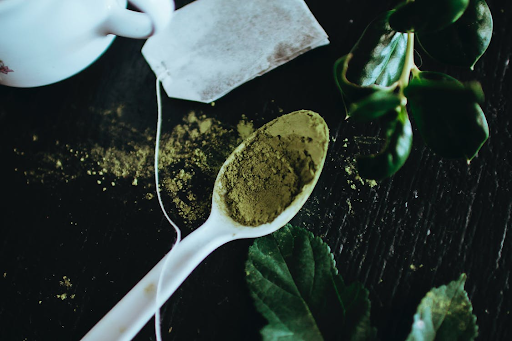
There’s a growing trend among supplemental health care practitioners and everyday people alike to unlock the potential of natural remedies for health, wellness, and emotional well-being. One such remedy is Kratom (Mitragyna speciosa). Unlike conventional pharmaceuticals with myriad risks and warnings, Kratom has become an increasingly popular holistic alternative — it comes in various forms like powder or capsules, usually extracted from leaves of certain trees native to Southeast Asia.
With more and more people turning to herbal supplements to treat mental or physical ailments, let’s dive deeper into the benefits of Kratom specifically and other botanicals commonly used for therapeutic purposes.
What is Kratom and How Can It Help You Achieve Wellness
Kratom is a tropical tree native to Southeast Asia. It has been used for centuries in traditional medicine to alleviate pain, increase energy, and enhance mood. Kratom contains alkaloids that bind to specific receptors in the brain, producing effects such as pain relief, stimulation, and relaxation. Its powerful benefits have led to an increased popularity in the Western world. People who suffer from chronic pain, anxiety, depression, or fatigue have found relief through using Kratom.
Additionally, it is considered a natural alternative to prescription drugs, making it a desirable option for many who seek wellness through holistic methods. Proper usage and dosage are crucial when taking Kratom to avoid adverse effects. Talk to a healthcare professional before incorporating Kratom into your wellness routine. Check out https://www.authentickratom.com/kratom-strains/ketapang-kratom.html for more information.
The Benefits of Incorporating Kratom Into Your Daily Routine
Kratom is known to be both stimulating and relaxing, making it an excellent holistic remedy for those seeking relief from physical pain or mental stress. Here are some of the benefits that come with incorporating Kratom into your daily routine.
The main benefit of Kratom is that it can help with pain relief. Its alkaloids bind to the brain’s opioid receptors, providing an analgesic effect and reducing inflammation. It also produces a mild mood-lifting effect, helping reduce stress and anxiety. Kratom also increases energy levels, making it useful for those tired or lacking motivation.
Kratom can be taken in various forms, such as powder, capsules, or tea. Additionally, its effects can vary depending on the strain chosen — each strain has a unique alkaloid profile that determines how it will affect you when taken. It is essential to research different strains carefully before taking any herbal supplements to know what you are ingesting and what kind of results to expect from taking them.
Safety First – Understanding Dosage and Side Effects
Taking Kratom in moderation is vital to achieving the desired effects without adverse reactions. Generally, people should not exceed six grams daily as higher doses can cause dizziness, nausea, and vomiting. It is always best to start with a low dose and increase gradually until you find the proper dosage for your body and individual needs.
Common side effects of Kratom include constipation, increased heart rate, dry mouth, headaches, and loss of appetite. These side effects are usually mild, but it is best to stop taking Kratom and consult a healthcare professional if they become bothersome. Additionally, pregnant or breastfeeding women should avoid taking Kratom as there have not been enough studies on its effect on infants or unborn fetuses.
Exploring Holistic Remedies To Promote Immunity, Energy, and Balance
In addition to Kratom, a variety of other holistic remedies can help promote immunity, energy, and balance. Herbs like turmeric, ginger, cardamom, ginseng, and ashwagandha have long been used in traditional medicine to fight infections or boost overall health and wellness.
Turmeric is rich in antioxidants and can help reduce inflammation, while ginger aids in digestion and helps to relieve nausea. Cardamom is an energizing aromatic herb found to improve cognitive abilities. Ginseng is known for its immune-boosting properties, and ashwagandha is believed to reduce stress levels and enhance mental clarity.
Aromatherapy for Relaxation and Stress Relief
Aromatherapy uses essential oils extracted from plants to bring about emotional, physical, and psychological balance. Essential oils like lavender, chamomile, bergamot, and ylang-ylang have been used for centuries to promote relaxation and reduce stress.
Aromatic diffusers or inhalers with essential oils can be a great way to relax after a long day. You can also use essential oil rollerballs on your wrists or temples to experience their calming effects. For those who prefer baths and showers, adding a few drops of an essential oil blend to your bathwater can relieve tension.
Identifying Herbal Supplements That Work Best For Your Body’s Needs
With so many herbal supplements on the market, it is essential to research and find those that work best for your body’s unique needs. Everyone reacts differently to different herbs, so paying attention to how you feel after taking them and adjusting as necessary is essential.
Also, consult a healthcare professional about any herbal supplement before trying it out — this will ensure that you have all the facts and understand any potential risks associated with taking them. You can confidently incorporate holistic remedies into your daily wellness routine and experience their powerful benefits with the correct information.
In Conclusion
Incorporating holistic remedies into your daily routine can have powerful effects, from pain relief to stress reduction. Kratom is one such herb used for centuries in traditional medicine to help people manage physical pain and mental distress. However, practicing safety first by understanding dosage and side effects before taking any herbal supplement is crucial. Many other herbs can also help promote energy, balance, and immunity.
Interesting Related Article: “Unconventional Ways to Pursue a Healthier Work Life Balance“
